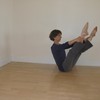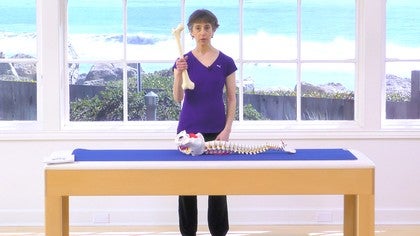The Psoas
Ruth Alpert
Tutorial 2170
Watch this Tutorial


Ruth Alpert
Deborah Wong: good question. I, too, have to use muscle effort to keep my legs parallel (blame all that ballet training as I was growing!) I would say that yes, allowing your legs to relax wherever they go, will still release the psoas. It could be tight rotators, but it also could be how the head of your femur is situated in the socket - genetically, which then causes the rotators to be tight. Or a host of other explanations.... there are always many right answers to any body story...but if the psoas is a messenger of the nervous system, then keeping the nervous system on edge is of no use!
9 years ago
Thank you Mia. If you let your body choose where to go, in an open improvisational manner, it's possible to unwind the torques... bodies, when they lead and not our minds, never choose to create damage!
8 years ago
Hi Ruth...is it common when doing the psoas release with legs at 90% on a chair that the tight side spasms and contracts..im hoping this means its trying to release??
Thanks again.
Thanks again.
8 years ago
Hi Mia, I'm not sure how to answer you, since I am not there to observe what is happening. A psoas that is spasming and contracting doesn't sound like it is releasing -- perhaps you should find a DO, or rolfer, or someone who can work with you locally. I highly respect Phillip Beach, who is in Wellington; you could ask him for a referral, maybe he has a colleague nearer to you. http://www.phillipbeach.com/contact .html
8 years ago
Thank you Ruth, I just watched one of his tutorials last night and it was great. Saw an osteo today, and it turned out Phillip was one of his tutors in the UK many years ok...synchronicity is a wonderful thing!! The leg twitches and trembles, so i may have sounded a little strong. But looks like could be illiacus issue. Thank you for your suggestion re Phillip.
8 years ago
51-60 of 83
You need to be a subscriber to post a comment.
Please Log In or Create an Account to start your free trial.







































